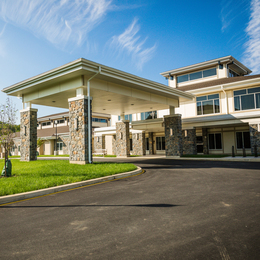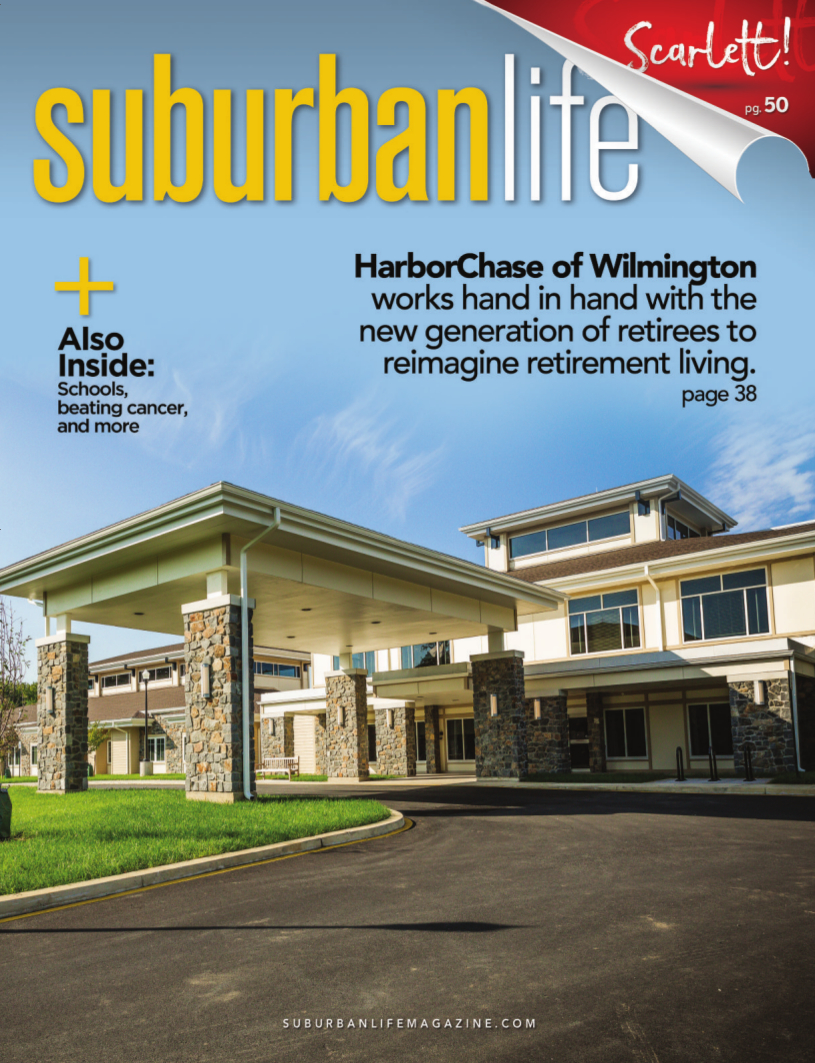
Redefining Retirement
Adaptive communities such as HarborChase of Wilmington work hand in hand with the new generation of retirees to reimagine retirement living.
The senior living landscape has changed in recent years, in part because of the rising wave of baby boomers who have a desire to explore. The wealth of living options means active and healthy seniors on the cusp of retirement shouldn’t have to settle for an “ordinary” destination to call home, especially one that cannot accommodate their ever-changing needs.
Until recently, American senior living communities have largely consisted of cookie-cutter developments that demand hefty upfront deposits, or “buy ins,” from residents who might eventually lose their financial stake if their healthcare needs change. For example, some residential communities do not offer memory care or cognitive support.
“I find an increasing number of potential residents coming to us from continuing care buy-in communities,” says Frank DeMarinis, Executive Director of HarborChase of Wilmington. “Some offer the ability to age in place for an upfront financial commitment but then can’t provide the type of medical or memory support down the road. It is a calling for new communities to ensure what ‘age in place’ means today, and that includes the physical, mental, and social aspects of lifestyle.”
Many of today’s finest available living options for seniors have evolved to offer the “full package.” In other words, they have had to adapt to a demand for retirees’ requests for state-of-the-art facilities, more expansive space, and the ability to age in place gracefully.
“We as a community and company continue to focus and design communities that allow independent seniors and those requiring assisted care to enjoy continuity in space and residential living,” DeMarinis adds. “Older CCRC (continuing care retirement community) models often find themselves struggling today as the aging process requires them to move along product lines. Senior living communities must continue to find ways to offer the help where the seniors live, and also adapt beautiful residences to also be functional in nature for physical needs.”
The boutique-style communities of which he speaks offer the highest quality of care without the extravagant buy-in requirements of the past. In addition, many of these communities offer choices that define retirement living as a “want” versus a “need,” and thus need to offer value in care and services, truly managing as a hospitality model rather than a medical model.
Dining is a fine example. Rather than offering “restaurant style” dining, Executive Chef Jason Eastman says HarborChase offers actual restaurant choices. Residents can enjoy a meal in Signatures, the main dining room at HarborChase of Wilmington, or in a smaller venue such as Fusions Lounge. They can have a late breakfast at the Counter-Offer Bistro, or just a beverage and continental choice.
“Our residents can ask for what they wish to eat,” Eastman says. “Think it, ask for it, and we will cater to making it. We don’t want to create too rigid a culinary experience. If someone were to eat from the same restaurant every day, even if it’s their favorite restaurant, without choice it may not continue to be their favorite. Chefs have to keep things fresh and continue to offer new cuisine options. Allowing creativity in the kitchen keeps the culinary team engaged and satisfied, too.”
Finding the Best Option
Evolving priorities of the newest generation of retirees, including the financial issues associated with living longer than prior generations, has made forward-thinking communities reimagine an approach that had remained largely static for decades. Increasingly savvy consumers are taking over where their Depression-era parents left off, wanting to have their say as to where and how they live as they age. For many seniors, the multistep model of transitioning from independent living to assisted living to intensive nursing and memory care, all on the same campus, is often the best option.
“I am finding spouses inquiring increasingly more for ways to be together but lessen the hardship in caretaking,” says Marie Velazquez, HarborChase’s Community Outreach and Service Director. “Many couples are coming to the community with the intent that one may receive assistance from our memory care, while their partner may still enjoy the independent or assisted living services moving freely through our service offerings. The transition is smoother in contrast to older models that result in abrupt moves through silos of care that are not truly representative of an age-in-place model.”
Many seniors say they prefer to age in place rather than move in with family or pack up for multistage assisted living because of the risk of isolation. The newest wave of senior living communities provides healthcare options that are integrated with desirable communities that are beautiful and functional, as well as clinically competent in cognitive support and other aspects of health care. Residents should not have to make a choice between a medical model, a residential model, or a hospitality model; an inclusive community will provide all three.
Since the emergence of the COVID-19 pandemic, the biggest question on the mind of prospective residents and their families is a simple one: Is it safe to move into one of these communities? DeMarinis says seniors should not feel as though they must choose between the options of moving to a nursing center or an attractive campus that cannot deliver on the demand for safe medical practices and functionality, and nor should they feel they have to stay home in order to be safe.
“We have and continue to grow our care practices that ensure that confidence without sacrificing the hospitality brand we are known for,” he says. “From sanitation practices, following guidelines on visitation protocols, and having dedicated staff tested for health and wellness on a regular basis, all of these things are important in order to maintain a community of hospitality that is also safe, secure, and feels like home.”
A community such as HarborChase of Wilmington, capable of addressing all of a resident’s needs in one place, can offer the highest assurance. The larger footprint of HarborChase communities speaks to the increased need for social distance. A grand and spacious dining room has become a blessing in a COVID-19 world. Residents and their families make good use of the exterior dining options.
DeMarinis concludes with some well-intentioned advice for seniors: When considering housing solutions for the near future, be mindful of factors such as affordability, service quality, and socialization, as well as confidence in healthcare delivery. More importantly, he suggests, don’t settle for a community that cannot provide all of the above.
HarborChase of Wilmington
2004 Shipley Road
Wilmington, Del.
(302) 797-1061
Photography courtesy of HarborChase of Wilmington
Published (and copyrighted) in Suburban Life magazine, October 2020.



